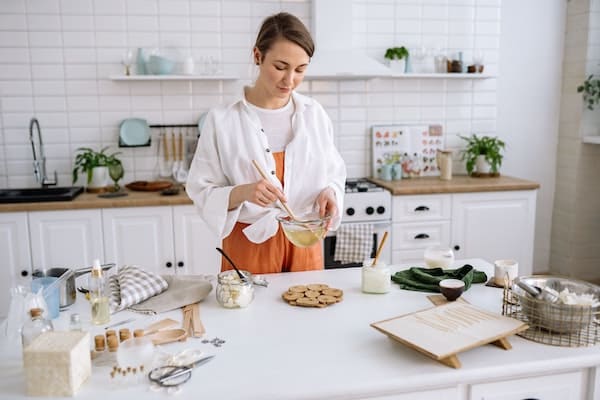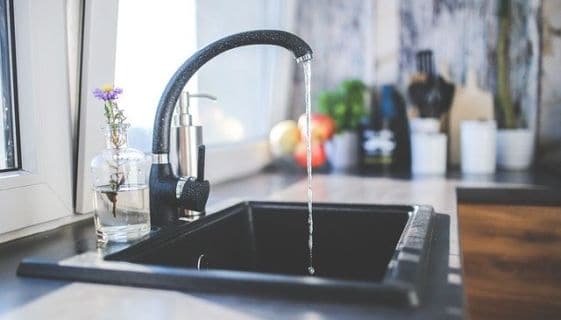Most people consider the kitchen “the heart of the home” for good reason: humans have always gathered and bonded around food. So it’s fitting that the word “companion” comes from the Latin meaning “with bread”, or, “one who breaks bread with another.”
The idea that this central place in our homes and lives might be filled with toxins is hard to believe or accept. However, there’s both good and bad news: the bad news is that the modern kitchen can—and often does—contain thousands of chemicals of concern. The good news is that by making informed purchasing decisions, yours doesn’t have to.
I’d like to bring your attention to two important classes of harmful chemicals common in most kitchens.
EDCs, or Endocrine Disrupting Chemicals
These are chemicals known to interfere with hormone regulation in the body. Examples of EDCs are BPA and phthalates. EDCs from the environment have been shown to affect sperm count and viability, neurodevelopmental deficits, obesity, and more. Many EDCs are associated with several different cancers, including breast cancer (1), and testicular cancer (2), which has been on the rise, especially among younger men. (The book Countdown, by epidemiologist Shanna H. Swan, explores how EDCs are lowering sperm counts and altering sexual development.)
PFAS (Per- and polyfluoroalkyl substances)
PFAS (Per- and polyfluoroalkyl substances) chemicals are a very large family of compounds — over 9,000 are currently registered with the EPA. Different PFAS compounds have been shown to affect human hormones, growth, and learning behavior; decrease female fertility; and increase cholesterol. PFASs also affect the immune system and increase the risk of developing certain kinds of cancer. PFAS molecules have some of the strongest bonds on earth, which is the reason they are often called “forever chemicals” — they do not break down in the environment. In the kitchen, these chemicals are associated with non-stick pans and utensils, and food contact materials.
To create a healthy kitchen, you’ll want to limit the number of kitchen items that contain these chemicals. How to do that? I can summarize the answer in one simple sentence: Avoid plastics and non-stick materials. Unfortunately, most kitchens are full of items made from plastics and non-stick materials.
Let’s look at some examples of places where we frequently find plastics and non-stick (PFAS) chemicals in the kitchen:
Plastics can be found in:
- Appliance tubing (like coffee machines)
- Kettles
- Water filters
- Cutting boards
- Utensils
- Straws
- Ice cube trays
- Plastic wrap
- Food contact materials
- Storage containers
PFAS chemicals can be found in:
- Pots and pans
- Muffin tins and cookie sheets
- Ovens, griddles, instant pots
- Microwave popcorn bags
- Straws
- Take-out containers
- Processed food packaging
- Baking papers
- Pizza boxes
- No-stain textiles
- Food contact materials
In 2011, researcher George Bittner at the University of Texas studied plastics for their leaching potential. Bittner’s team tested almost 500 different plastic containers of all types, numbers 1-7. When the researchers stressed the materials under “real world” conditions of simulated sunlight, microwaving, and dishwashing, about 95% of the products tested positive for leaching chemicals that acted like estrogen. This included most of the products labeled as BPA-free. (3) Chemicals that act like estrogen are a type of EDC — that is, they are capable of disrupting human hormones. Scientists have found that within 10-12 minutes of exposure to BPA, BPA metabolites (breakdown products) can be found in human blood and urine. These levels peak but then quickly decline, and are eventually excreted within 24 hours. That’s the good news.
Here’s the bad news: More than 90% of Americans have BPA in their bodies, because we are continually exposed to this chemical during the course of each day.
Download our eBook The Healthy Kitchen: Reducing Chemicals and Toxic Exposures to learn how you can reduce harmful chemicals in your kitchen.



 Deborah deMoulpied
Deborah deMoulpied 

